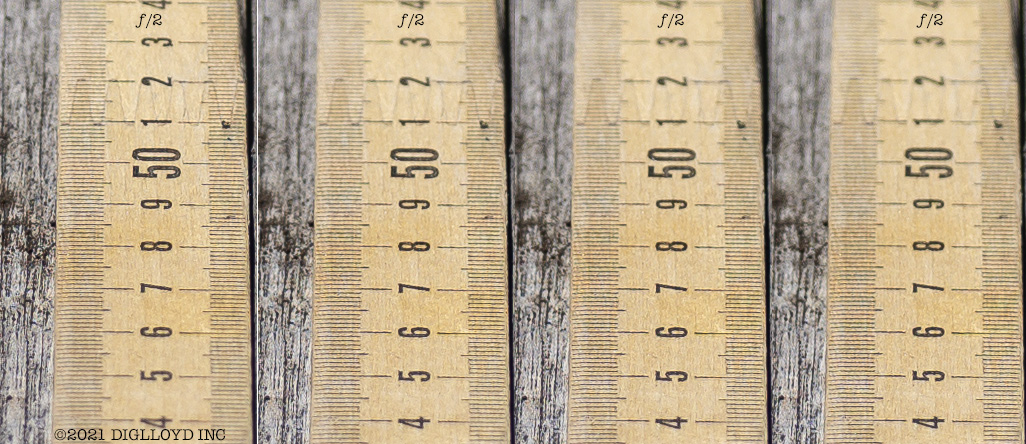Test Protocol for Focus Creep / Unstable Lens Focus
I recommend testing your own lens in both cool and warm temperatures and at various focusing positions,. The focus creep could be sensitive to temperature (not sure) the rotation of the helicoid (probable). And there can be sample variation.
Test protocol for focus creep and focus shift
Protocol ostensibly for manual focus lenses with focusing helicoid, but might apply to autofocus lenses.
Repeat this procedure twice: once with the camera level, and once angled down 30° or so.
Be exceedingly careful to touch ONLY the aperture ring when changing aperture.
- Focus wide open on a long ruler with mm or similar markings.
- Shoot series at 2, 2.8, 4, 5.6, 8, then again at f/2,
- Shoot 2/8, 2/8, 2/8, 2/8.
- Compare all f/2 frames. They should be identical.
- Check the sharp near and far points on the ruler at each aperture, ascertaining whether focus is increasingly biased rearward (or forward).
This procedure also detects focus shift. The series with a level camera will show focus shift; the series with the camera angled down will yield focus shift (if any) + focus creep.
Example
In the example below following this protocol, a couple of centimeters of focus difference is seen at f/2 at a distance of ~4 feet—a massive difference. It doesn’t matter where focus starts; the only thing that matters is that it remain the same. If it changes, then the lens focus is unstable (focus creep) and/or there is optical focus shift.
Below are four frames at f/2, from the series {2, 2.8, 4, 5.6, 8, 2, 8, 2, 8, 2}, with the camera angled down about 30°. The focusing ring was never touched; the aperture ring was the only physical contact other than the shutter release. The images are in perfect registration, which rules out the tripod/head moving. There is a whopping 5cm change in focus on the ruler, from 50 to start to 45 by the 4th frame without touch the lens focusing ring. Both lenses show this behavior. On level, I don’t see it change.
However, it seems curiously variable, so I am having trouble pinning things down. Variables might include camera angle, focus distance (because the helicoid will be in a different position), possibly temperature.






























